Why £500k, 450bhp Prodrive P25 needs a bigger road
A half-million-pound Impreza might seem laughable, but with its WRC DNA the Prodrive P25 is no joke. Stephen Dobie struggles to contain it
Dean Smith
This is our kind of restomod. While the world goes gaga for million-pound-plus Porsche 911s with reimagined bodies, perhaps something with proven motor sport nous is how to convince folk like us that a retired icon warrants a comeback.
The Prodrive P25 is exactly that. Ostensibly it’s the old Subaru Impreza STI 22B road car, but modernised for the 2020s. Sounds too easy. And it is. Because in reality it’s something else entirely. With the team of people behind it, we ought not be too surprised. What you’re essentially looking at is a late 1990s WRC Impreza with fewer stickers and two decades of technological evolution sprinkled sympathetically through it.
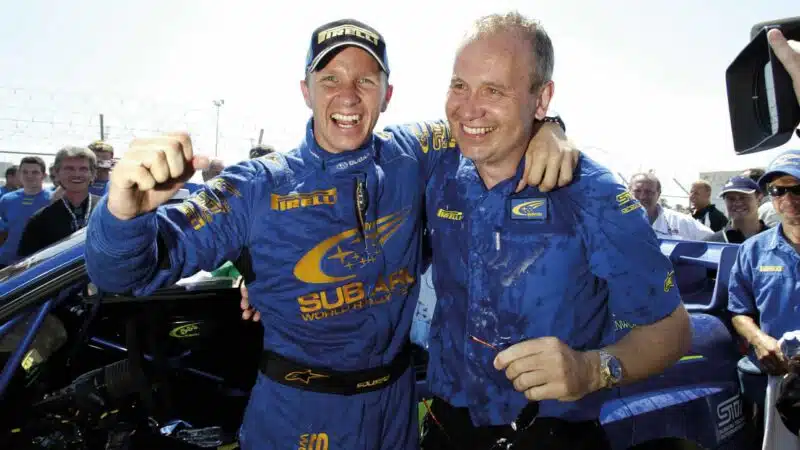
Petter Solberg, left, and David Lapworth. Solberg lifted the 2003 WRC title with an Impreza
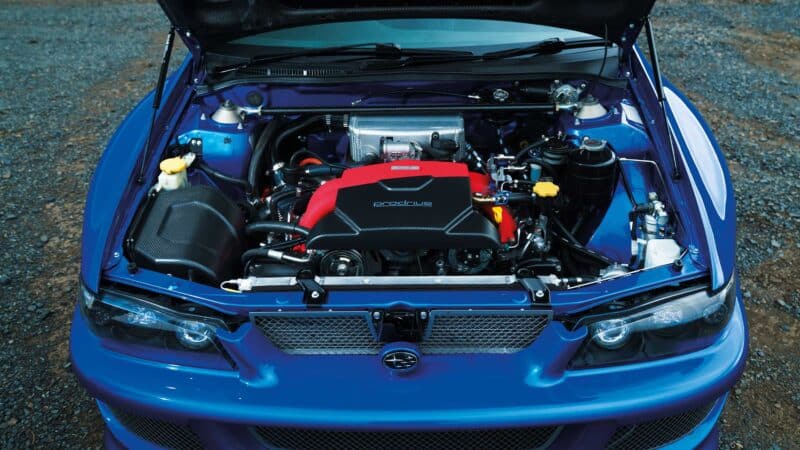
Electronics and mapping are where progress has really been made since the ’90s
Dean Smith
Prodrive is now almost 40 years old and has campaigned cars in almost every sporting discipline, though its rallying success is perhaps it’s greatest calling card. “David Richards [Prodrive founder] had a feeling we should look at doing a car for the road as well as our usual competition development,” engineering lead David Lapworth says.
Lapworth also headed up the halcyon days of Subaru’s rally team. “The nostalgia comes from Colin McRae competing in cars like this. Those two things slowly came together, but the hardest part was developing a road car for the boss while also protecting our motor sport DNA. Everyone has a different view on where the happy medium is; we think we’ve met it, though maybe the car leans more towards the motor sport side. We normally work tightly to regulations and rulebooks. Deciding how far we want to take things is a new skill to learn.”
“It’s all part of the DNA of this car… you drive it. You don’t need to fight it”
Lapworth worked alongside McRae, Richard Burns and Petter Solberg as they took Imprezas to WRC glory, but proudly claims the P25 is keener than any of those title-winning cars. “As you’d hope,” he says, “otherwise how have we progressed over the last few decades? The core of what’s in here is what we’ve learned from our race and rally projects over the last 20 years. Engine management is the area where things are much more sophisticated. Here we have more performance than any of our WRC cars yet with the driveability of a modern sports car.”
The spec sheet is quite robust. A four-cylinder boxer engine – as per Subaru tradition – is bored out to 2.5-litres and gains new fuelling, electronic and cooling systems as well as a whopping Garret turbocharger. A raucous Akrapovic exhaust system uses Inconel and Titanium while a six-speed sequential gearbox is your only option, its clutch automated and only vital when pulling away and negotiating junctions. It’s all-wheel drive – naturally – with power metered out via an active centre differential educated by Prodrive’s stage exploits. There’s power steering with a quick rack plus some bespoke AP Racing brakes large enough to demand stocky 19in wheels. Don’t worry – they’re also available in gold.
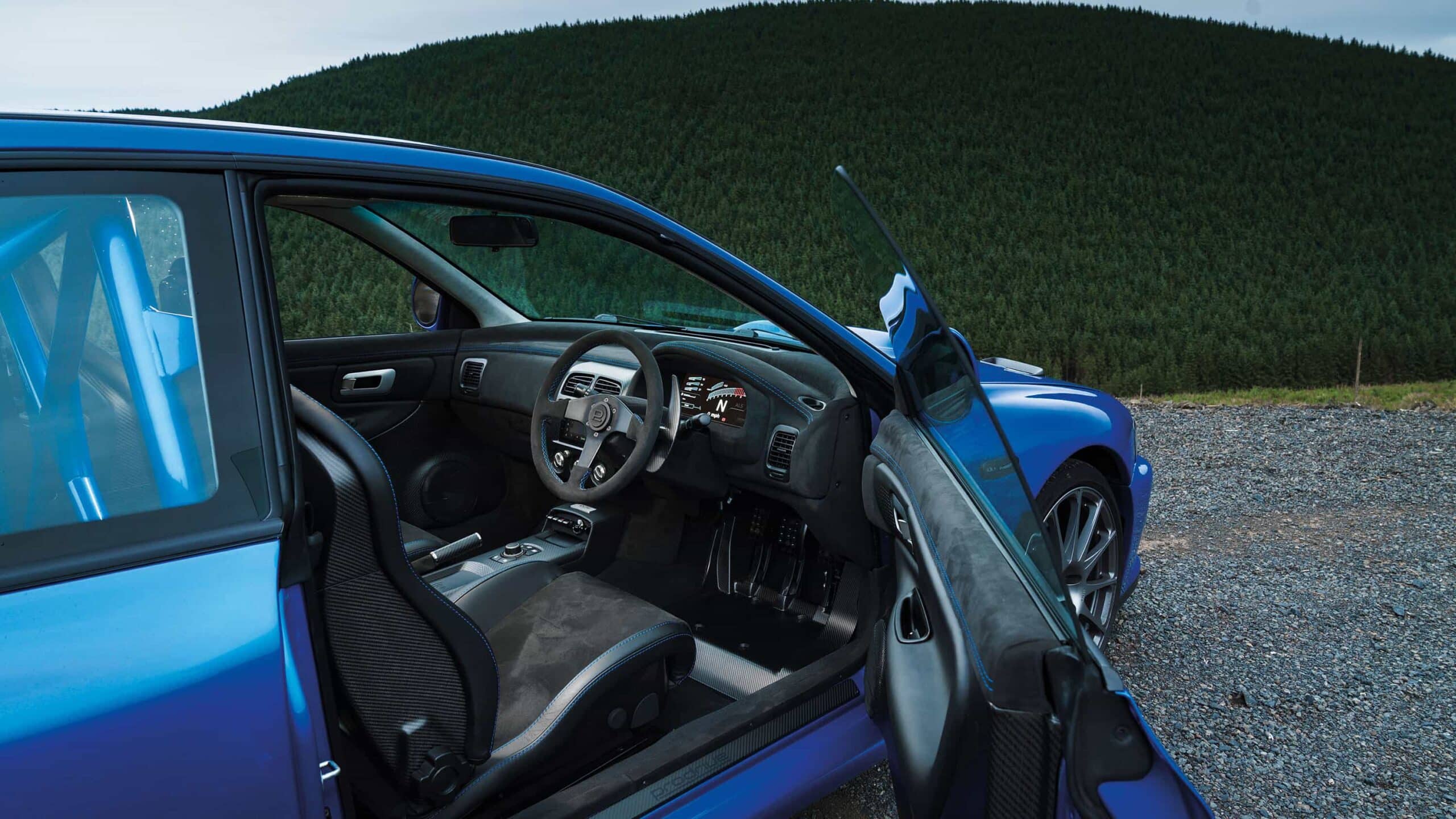
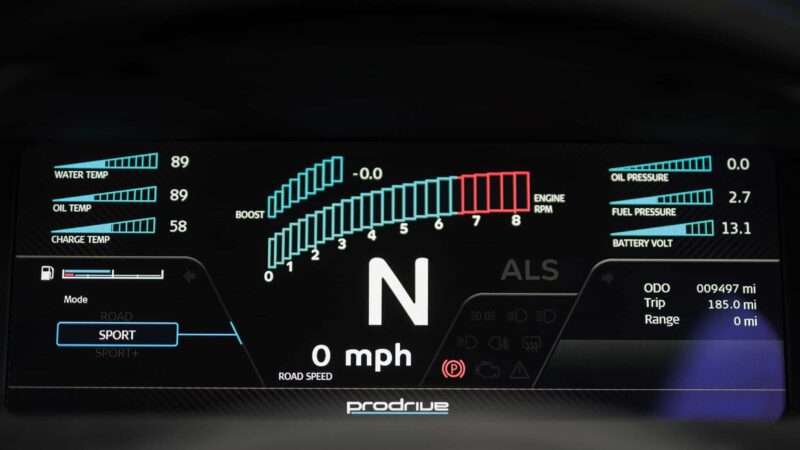
HD widescreen driver display.
Dean Smith
The dampers are mechanically adjustable Bilsteins and the whole thing weighs roughly 1200kg. A scant figure when you consider its peak outputs are 450bhp and 442lb ft, freed up by Sport and Sport Plus driving modes – the latter even brings anti-lag – while a tamer Road setting limits things to 375bhp and 369lb ft. Engage everything, including Launch Control – which automatically shifts through first and second – and you’ll hit 60mph in under three seconds. “I haven’t driven a latest generation WRC car,” says Lapworth, “but you look at the numbers and this is probably quicker.”
An existing two-door Impreza shell is recast almost entirely in carbon fibre for a look that apes the 1997 WRC car, its makeover overseen by the same man who penned the original, Peter Stevens. It’d be perfect were it not for the aftermarket-looking lights that have helped type-approve the car in various markets. Were it my £460,000 (plus taxes) I’d have them swapped for period ones.
Yes, that really is the price. But it’s par for the restomod course and Lapworth freely admits he could have pushed the boundaries yet further and made it the full million. When all 25 examples sold in a matter of days, the price is surely a moot point anyway. The fact it was tested alongside modern supercars also suggests Prodrive knows exactly where it’s pitched. Or more pertinently, what the folk buying it likely have at home already, freeing up headroom for how ferocious the P25 can be – and thus how many modern niceties it can throw mercilessly to the wind.
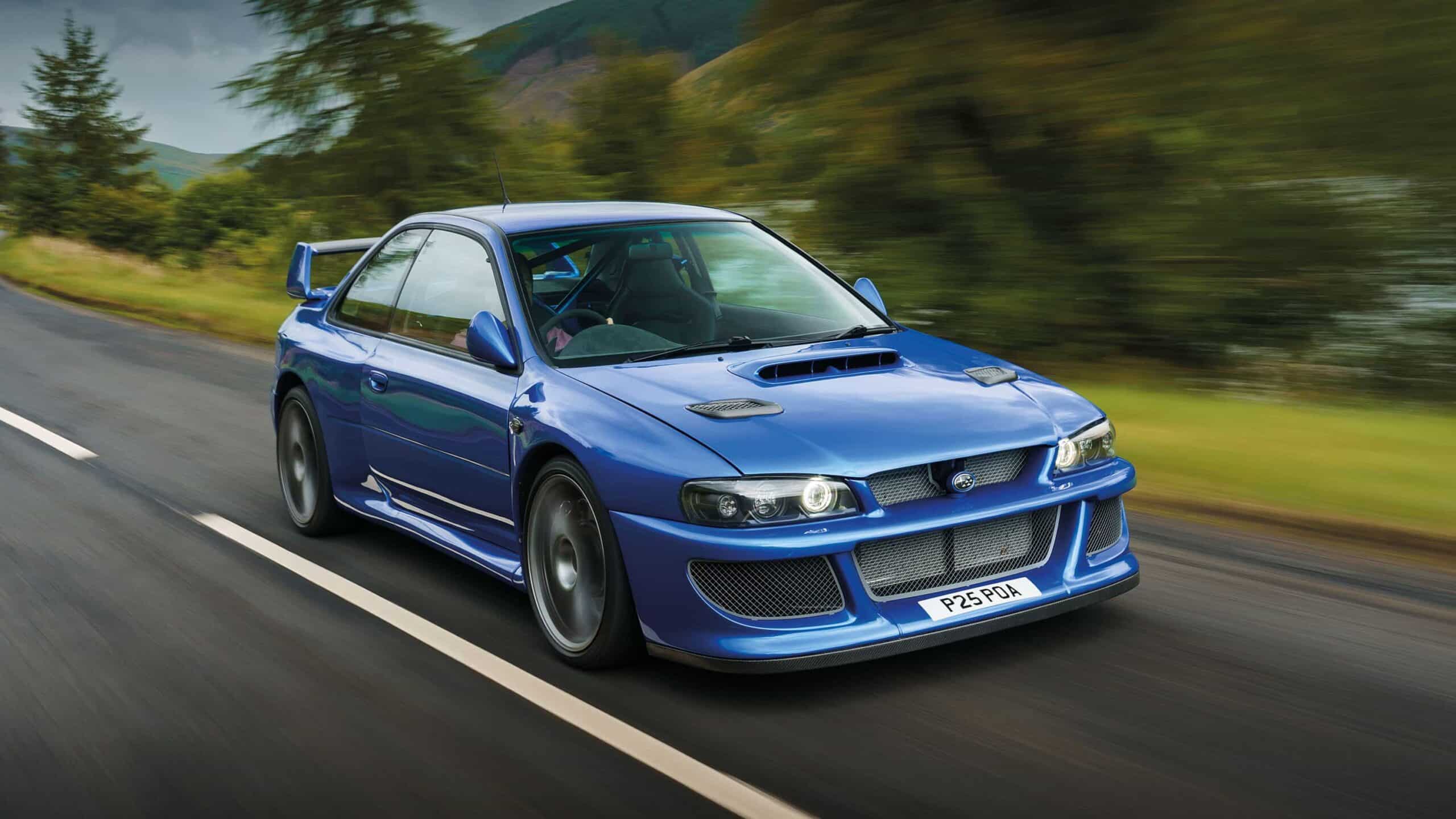
Which means no ABS, nor traction and stability control. “That’s part of the DNA… you drive it,” adds Lapworth. “We tested it alongside modern supercars and, in the same conditions, their ESP lights would be flashing while this would be going at the same speed or faster without any drama. You don’t need to worry about the rear coming round like it’s a 205 GTI into a corner. You don’t need to fight with the car. This is about as fast as a car can get before you need to take control away from the driver [with electronic systems].”
The feeling as I climb inside is truly mixed, in awe of the project I’m about to sample but balancing excitement and trepidation about just what a serious proposition I’m ensconcing myself in. A regular seatbelt helps ease the tension (both four- and six-point harnesses are optional if you’re willing to delete the rear seats), as does the sheer approachability of the sequential ’box. Prodrive’s most iconic Imprezas used a H-pattern manual, but this upgrade brings the car right up to date and is – in truth – central to the whole experience.
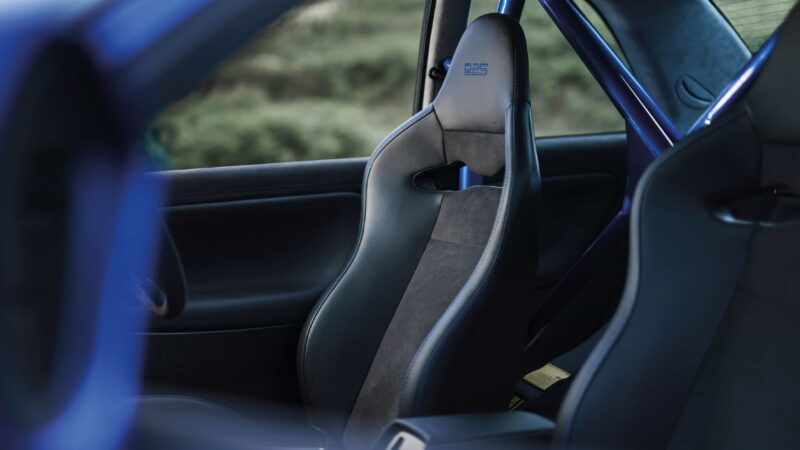
You’ve a choice between rear seats or a half cage; the front seats can be standard, reclining or fixed carbon
Suburu prodrive p25 Rear
A quick acclimatisation run around the block reveals it to be an amiable partner, with an automated dose of revs once you reach biting point on the clutch to avoid any embarrassing stalls as you feed in the throttle. There’s one carbon paddle; push it to go down the transmission, pull to go up. Almost everything is clutchless and downshifts are automated if the car doesn’t sense you stepping in, making traffic much less of a chore. The experience sits somewhere between a full race ’box and the twin-clutch autos now commonplace on sports cars.
However much it holds your hand, the P25 possesses a mechanical layout that loves revs and actively seeks, then unflinchingly rewards, confidence from its driver. There’s little use feeling your way around, warming yourself up; it begs aggressive hands and feet right from the off. It feels wild and tamed all at once – not a difficult car to slalom through rush hour, but an utterly absurd one, not least when the transmission shunts loudly and physically into first gear as you roll up to traffic lights, the sound ricocheting off urban brickwork like a gunshot.
“It draws a keenness that should only really be freed on a circuit”
It’s out of such confines that it truly shines, of course. I can’t think of a car of such potency that I’ve begun pushing so quickly – Lapworth didn’t lie about the predictability of the chassis beneath me. It favours utmost traction but never lacks thrills, and once you’ve prodded it into its spor tier modes – something I think you’ll do rather quickly – the breathlessness of its acceleration as you punch animatedly through its first three gears is all-consuming. There’s turbo lag below 3000rpm, but it often provides a useful breather.
While the steering is beautifully weighted, you don’t get to revel in its feedback, your inputs soon as swift and efficient as any self-respecting rally driver’s. Dabs of steering are often so minimal that the indicators don’t self-cancel out of roundabouts. While more aggressive driving does start to tease out oversteer, that centre diff works its magic and you simply keep your foot in rather than apply corrective lock. Pace is unabated, its deft 1990s dimensions and expansive glass only swelling your confidence on twisting lanes. It defiantly focuses on the ruthless speed of a competition car over the playfulness of a sports car. Seasoned rally pro Mark Higgins, who was part of the development team, apparently argued for a little more of the latter. I’m inclined to agree with him. And yet the P25 is so unique in its proposition – its sounds, visuals and dynamics are pure Tarmac rally car – that it might feel like a different product entirely had he won the team over.
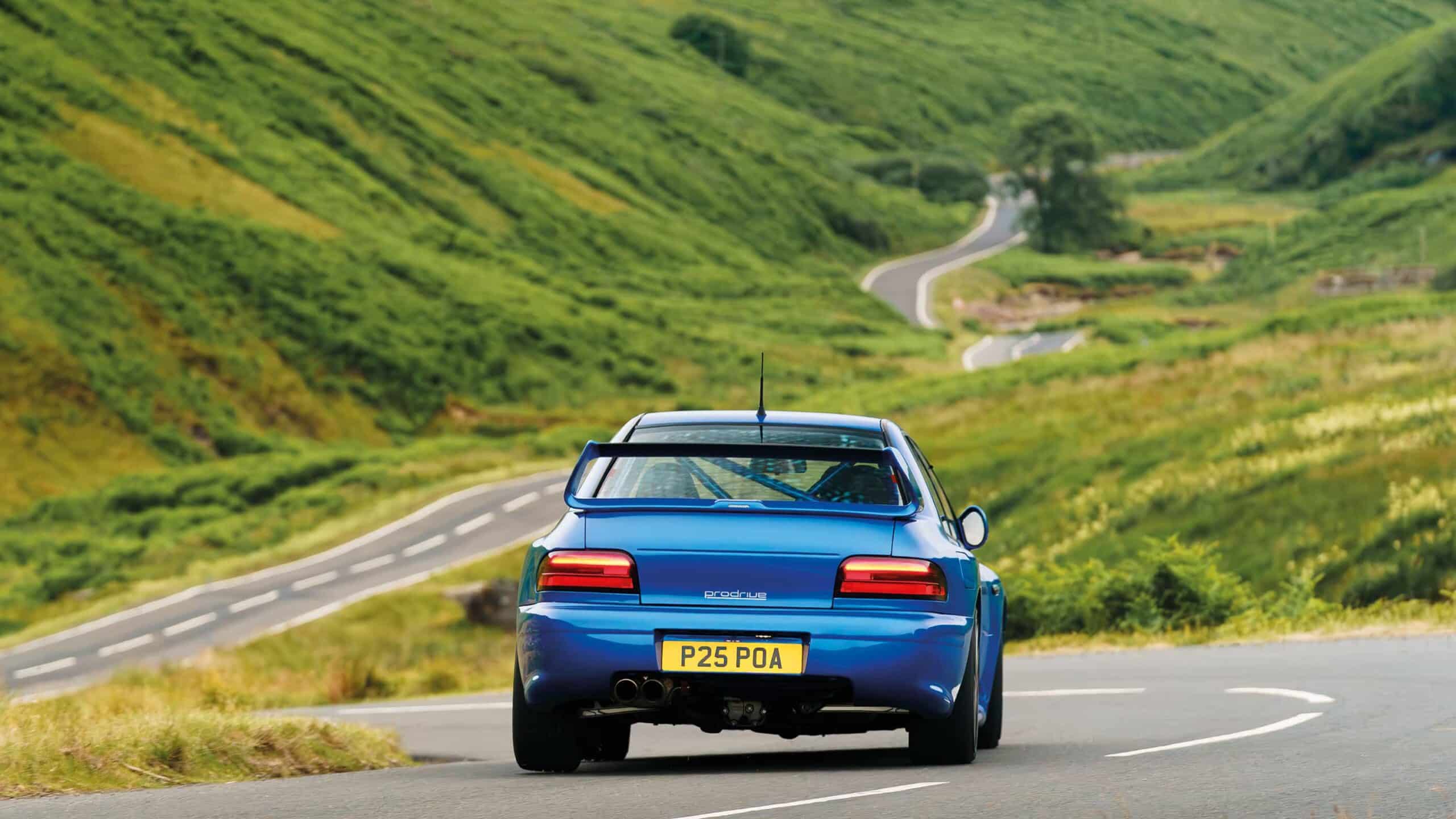
The only obvious criticism is that the WRC tribute act is so committed, the boundaries may have been pushed too far. The car’s animalistic nature is infectious and draws a keenness that should only really be freed on a circuit or closed road. A few perturbed passers-by weren’t too keen on the sheer racket the P25 makes, either. This car most certainly deserves a bigger, freer playground and that’s precisely what Prodrive has planned, with days on Corsica or the Col de Turini designed to further justify the healthy investment of those 25 customers. There could be no better way to fully lean into this car’s heritage. It really is our kind of restomod.
Specification
Price: £552,000
Power: 450bhp
Torque: 442lb ft
Engine: 2.5 litres, four cylinders, turbo, petrol
Weight: 1200kg
0-60: sub-3sec
Max Speed: 150mph